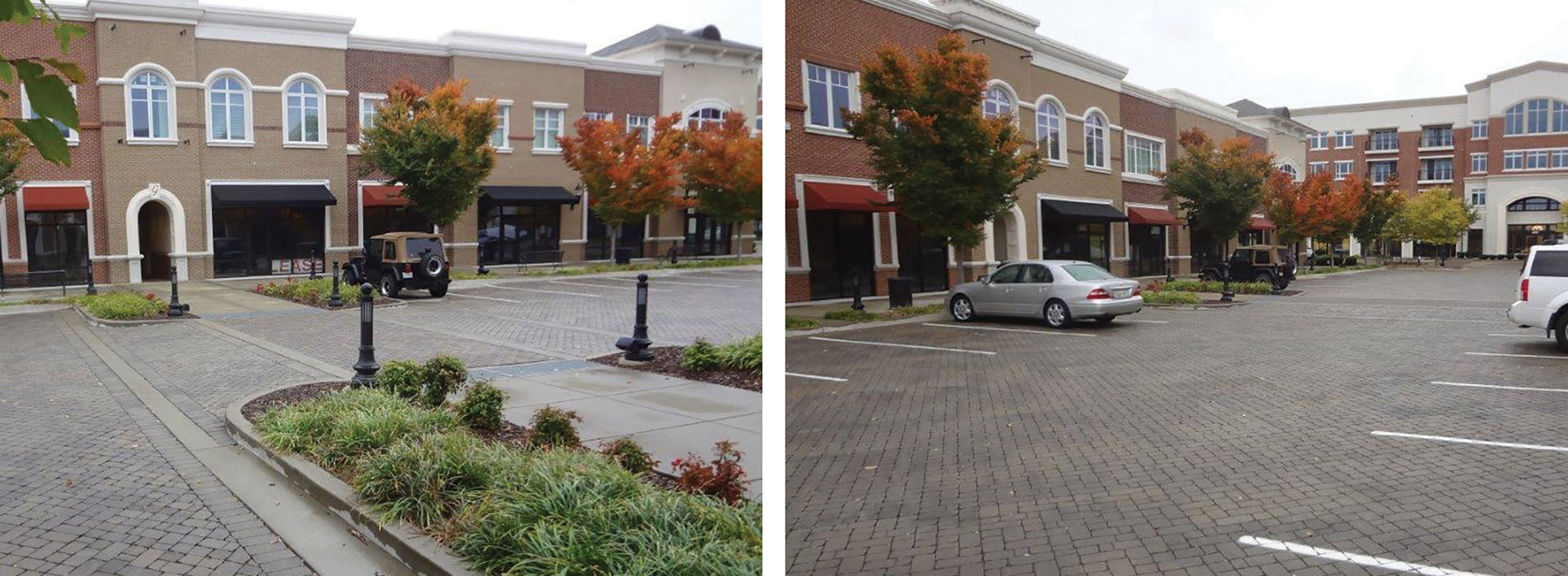Gateway Village
| Murfreesboro Project is Gateway to City’s Stormwater Management Approach |
Background
Murfreesboro, Tennessee, is one of the fastest growing cities in the country thanks to strong city planning that includes good schools and plentiful employment, so it’s no surprise that the local municipality would take a progressive approach to stormwater management. This consideration for stormwater management was key in the development of Gateway Village, a mixed-use project with 62 residential units and 61,500 square feet of office/ retail space spread over three buildings that vary in size from two stories to four stories.
The Challenge
The project was a LEED certified project and needed to attain specific environmental objectives as well as meet the local municipality’s stormwater requirements for water quality, streambank protection, detention volume and flood management. As a mixed-use project with a subsurface garage, residential, office and retail space, the site needed to be able to receive a variety of vehicles, including an estimated 2,000 passenger vehicles each day.
It also needed to receive garbage trucks on a normal cycle as well as other single unit or van type delivery vehicles on a daily basis. Additionally, two to three times each week a WB-50 type vehicle, or 18-wheel tractor trailer, is likely to make deliveries. Overall, as a community under development, Gateway Village had both environmental, durability and aesthetic considerations.
The Solution
Belgard® Interlocking Concrete Permeable Pavement (PICP) helped the project meet certain environmental certification objectives as well as mandates set by the local municipality for water quality, streambank protection and flood management. SEC, Inc engineering chose PICP because of its ability to achieve multiple goals.
“Belgard permeable pavers helped achieve LEED certification and meet local stormwater mandates, and it also set the ambiance for the center,” said Matt Taylor, Vice President of SEC, Inc. engineering, which cites Gateway as its first of many experiences with PICP. “We did a lot of research on permeable interlocking concrete pavers as a pervious pavement solution for the Gateway project, because we previously had only seen porous asphalt and pervious concrete. Both of those present issues with performance and aesthetics and create long-term maintenance demands for our clients,” Taylor said. “Now PICP is an option we look at for almost every project.”
SEC, Inc. considered an underground detention with a proprietary water quality unit, but the systems are large, expensive and require maintenance. With PICP, the pavers and subgrade aggregates naturally clean the water. For Gateway, the subgrade is a mixture of bedrock and silty clay, and the substructure to the permeable pavers provided adequate storage volume to meet detention volume requirements and allow natural infiltration to mimic the predevelopment conditions. Underdrains were utilized on the project to aid in draining away runoff from buildings on the “uphill” side as well as from the most downstream fill slope. No other storm drainage exists on the project except for some culverts at the rear of the project where pedestrian ways cross existing drainage swales.
The Result
The 1-100 year storms were accounted for in this design, and the only water that runs off the pavement is if a portion of the paver system is clogged on the surface. A study by Middle Tennessee State University verified these findings. Working with a grant from the City of Murfreesboro, the Concrete Industry Management program at Middle Tennessee State University studied water quality and quantity using an ISCO sampler situated at the site for two years.
“In that period of time there were 41 inches of rain—or 2.3 million gallons of water—and we found that there was no water discharge at the discharge outlet located at the back of the site,” said Dr. Heather Brown of Middle Tennessee State University. “All of the water from the rooftops and parking surface was infiltrated back into the soil and replenished into the groundwater aquifer system. The system is working as it was designed.”
With its completion, Gateway Village became the first PICP project to be completed in the city of Murfreesboro and it has become a model for the city’s consideration of storm water management for new construction. “The use of PICP, underground water storage and a hardscape surface allowed us to increase our yield of leasable space and reduce our long-term maintenance costs,” said Property Owner Joe Swanson of Swanson Companies. “The benefits extend to our tenants, too, who enjoy the convenience of abundant and attractive parking areas for their employees, shoppers and diners”.


